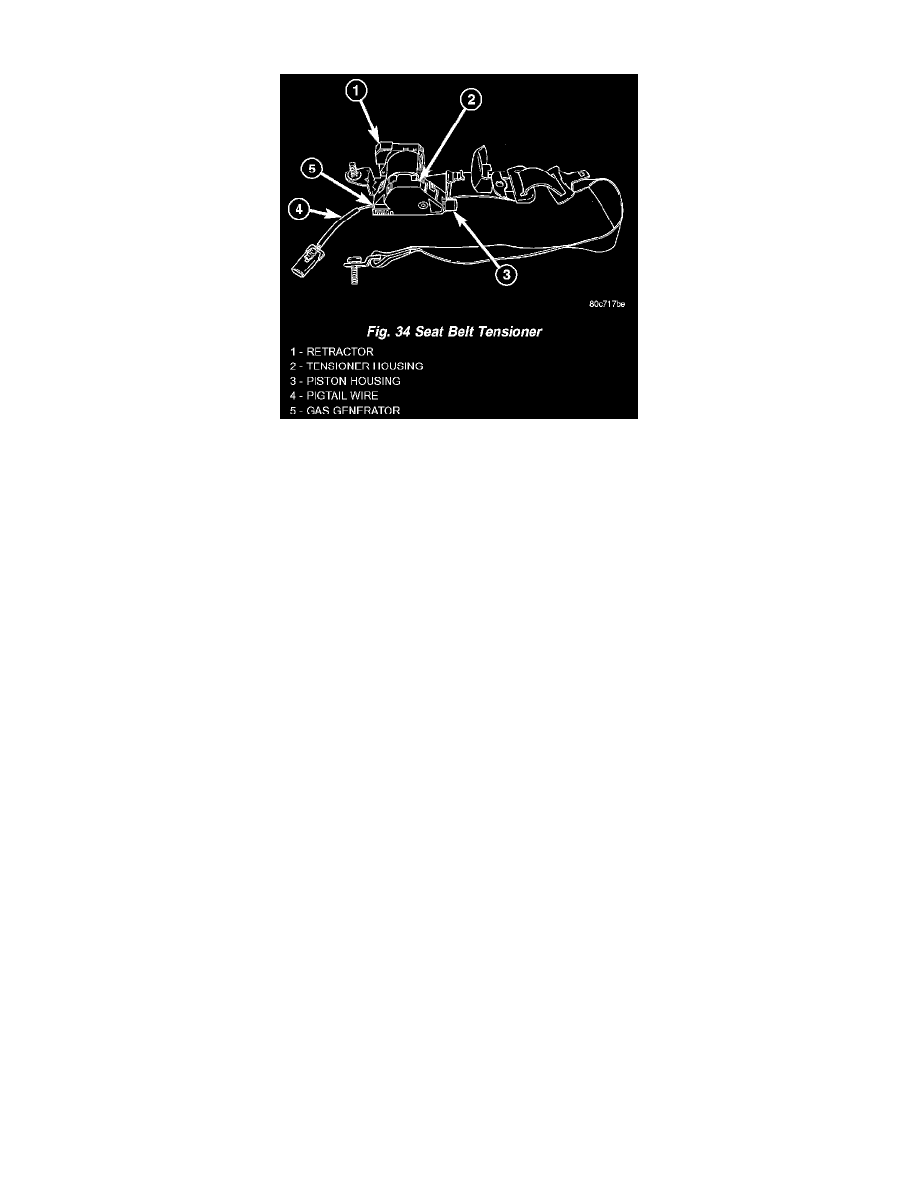Liberty Sport 2WD L4-2.4L VIN 1 (2002)

Seat Belt Tensioner: Description and Operation
Fig.34 Seat Belt Tensioner
A driver side seat belt tensioner supplements the driver airbag system for all versions of this model. The seat belt tensioner is integral to the driver side
front seat belt and retractor unit, which is secured to the B-pillar on the left side of the vehicle. The retractor is concealed beneath the molded plastic
B-pillar trim. The seat belt tensioner consists primarily of a molded plastic tensioner housing, a tubular metal piston housing, a piston, a short rack gear,
a set of pinion gears, a pyrotechnically activated gas generator, and a short pigtail wire. All of these components are located on one side of the retractor
spool on the outside of the retractor housing. The seat belt tensioner is controlled by the Airbag Control Module (ACM) and is connected to the vehicle
electrical system through a dedicated take out of the body wire harness by a keyed and latching molded plastic connector insulator to ensure a secure
connection.
The seat belt tensioner cannot be repaired and, if faulty or damaged, the entire driver side front seat belt and retractor unit must be replaced. The seat belt
tensioner is not intended for reuse and must be replaced following a deployment. A locked retractor that will not allow the seat belt webbing to be
retracted or extracted is a sure indication that the seat belt tensioner has been deployed and requires replacement. (Refer to RESTRAINTS/FRONT
SEAT BELT & RETRACTOR - REMOVAL).
The seat belt tensioner is deployed by a signal generated by the Airbag Control Module (ACM) through the driver seat belt tensioner line 1 and line 2 (or
squib) circuits. When the ACM sends the proper electrical signal to the tensioner, the electrical energy generates enough heat to initiate a small
pyrotechnic gas generator. The gas generator is installed in one end of the tubular metal piston housing, which contains a piston and a small rack gear. As
the gas expands, it pushes the piston and the rack gear through the tube. The rack gear engages a pinion gear that drives a gear set in the tensioner
housing, which drives the seat belt retractor spool causing the slack to be removed from the driver side front seat belt. Removing excess slack from the
driver side front seat belt not only keeps the occupant properly positioned for an airbag deployment following a frontal impact of the vehicle, but also
helps to reduce injuries that the occupant of the driver side front seat might experience in these situations as a result of a harmful contact with the
steering wheel and/or steering column. Also, the seat belt tensioner has a torsion bar mechanism that is designed to deform in order to control the loading
being applied to the occupant of the driver side front seat by the seat belt during a frontal impact, further reducing the potential for occupant injuries.
The ACM monitors the condition of the seat belt tensioner through circuit resistance, and will illuminate the airbag indicator in the ElectroMechanical
Instrument Cluster (EMIC) and store a Diagnostic Trouble Code (DTC) for any fault that is detected. For proper diagnosis of the seat belt tensioner, a
DRBIII scan tool is required. Refer to the appropriate diagnostic information.
